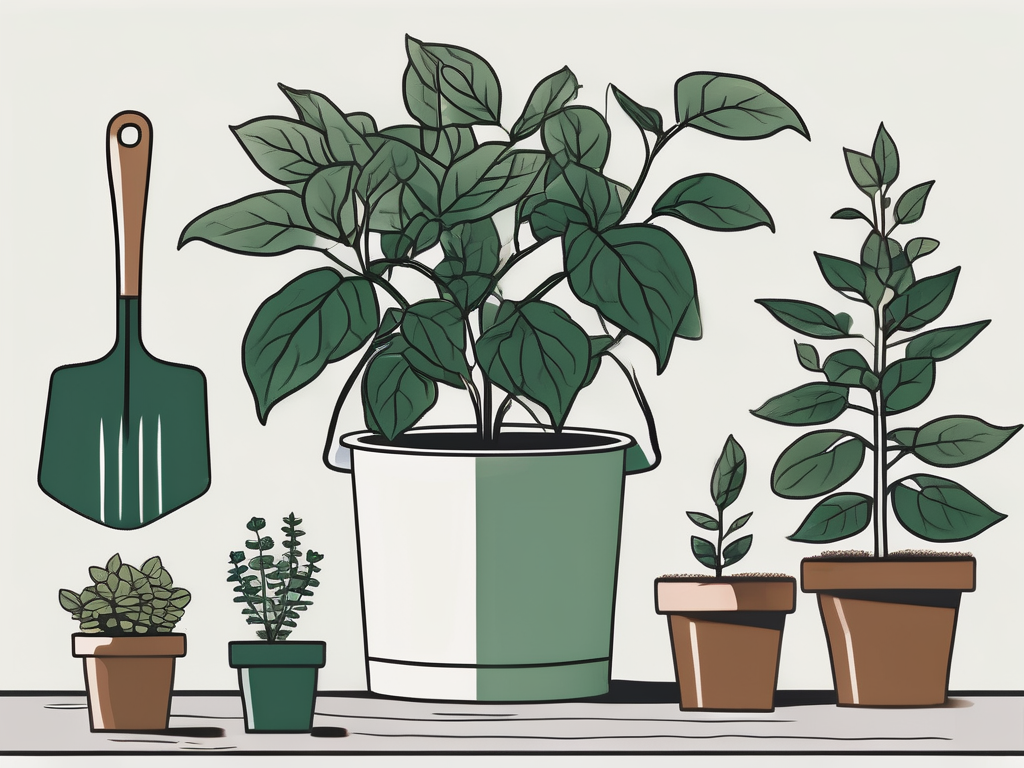
Sansevieria, also known as the Snake Plant or Mother-in-Law's Tongue, is a favorite among houseplant lovers for its striking upright leaves and its hardiness. But did you know it’s also incredibly easy to propagate? Yes, you can transform your single plant into a whole family of Snake Plants with just a bit of time and patience.
In this guide, we'll take you through the process of propagating Sansevieria step-by-step. From choosing the right method for propagation to caring for your new plants, we'll cover everything you need to know to multiply your Snake Plant collection with confidence.
Choosing the Right Propagation Method
Before you start snipping away, it's important to understand the different methods of propagating Sansevieria. Each technique has its own pros and cons, and choosing the right one depends on your preferences and the resources you have available. Here are the most common methods:
- Leaf Cuttings: This is perhaps the most popular way to propagate Sansevieria. It's as simple as cutting a leaf into sections and planting them in soil. This method is quite straightforward and doesn't require much more than a healthy leaf and some patience.
- Division: If your Sansevieria has multiple rosettes, you can divide the plant at the roots. This method is quick and ensures that each new plant will have an established root system from the start.
- Water Propagation: Similar to leaf cuttings, but instead of planting the cuttings directly in soil, you place them in water. This allows you to watch the roots develop, which can be quite satisfying.
Now that you know your options, let's dig into each method in more detail.
Propagating Sansevieria with Leaf Cuttings
Leaf cuttings are a great way to propagate because they require minimal equipment and space. Here's a step-by-step guide to get you started:
Step 1: Choose the Right Leaf
Select a healthy, mature leaf from your Snake Plant. Avoid using very young or very old leaves, as they might not root as effectively. Look for leaves that are blemish-free and robust.
Step 2: Make the Cut
Using a clean, sharp knife or scissors, cut the leaf at the base. Then, cut the leaf into sections about 3-4 inches long. Make sure to remember which end is the bottom, as this is the part that needs to be planted in the soil.
Step 3: Let Them Callus
Before planting, allow your cuttings to dry and callus over for a couple of days. This step is crucial as it helps prevent rot when the cuttings are planted.
Step 4: Plant the Cuttings
Once callused, plant the cuttings in a well-draining potting mix. You can use a cactus mix or make your own by mixing regular potting soil with perlite or sand. Insert the cuttings about an inch deep into the soil, ensuring they are upright.
Water the soil lightly, and place the pot in a warm, bright spot, but away from direct sunlight. Patience is key here, as it can take several weeks to months for new growth to appear.
Propagating Sansevieria by Division
Division is a quicker method if you have a mature plant with multiple rosettes. It involves separating the plant into smaller sections, each with its roots. Here's how you can do it:
Step 1: Remove the Plant from the Pot
Gently remove your Sansevieria from its pot. You might need to tip the pot sideways and tap it gently to loosen the plant. Be careful not to damage the roots while doing this.
Step 2: Separate the Rosettes
Look for natural separations between the rosettes. Using your hands, gently pull apart the sections. Use a clean knife to separate any stubborn roots that won’t come apart easily. Each section should have its roots intact.
Step 3: Repot the Divisions
Plant each division in its pot filled with fresh, well-draining soil. Water them lightly and place them in a bright spot with indirect light. The new plants should settle in and start establishing themselves in their new home.
Water Propagation for Sansevieria
Water propagation is another fascinating method, especially for those who love watching the rooting process. Here’s how you can do it:
Step 1: Prepare Your Cuttings
Follow the same initial steps as leaf cuttings: select a healthy leaf, cut it into sections, and let them callus over for a couple of days.
Step 2: Place in Water
Fill a jar or glass with water and place the cuttings in it, making sure the bottom part is submerged. Change the water every few days to prevent stagnation and bacterial growth.
Step 3: Wait for Roots
Position the jar in a bright spot, avoiding direct sunlight. After a few weeks, you should start seeing roots forming. Once the roots are a couple of inches long, you can transfer them to soil.
Remember to handle the cuttings gently when moving them to soil to avoid damaging the delicate roots.
Caring for Your New Sansevieria Plants
Congratulations on successfully propagating your Sansevieria! Now, let's ensure your new plants thrive. Here are some care tips:
- Watering: Sansevierias prefer to dry out between waterings. Overwatering is the most common issue, so only water when the top inch of soil feels dry.
- Light: These plants do well in bright, indirect light but can also tolerate low light. However, keep them out of direct sunlight to prevent leaf burn.
- Temperature: They prefer temperatures between 60°F and 80°F. Avoid placing them in drafty areas or near cold windows during winter.
- Fertilizing: Feed your plants with a balanced, diluted fertilizer during the growing season (spring and summer) once a month.
With these tips, your new Sansevierias should grow healthily and add a touch of green to any room.
Common Challenges in Propagating Sansevieria
Even though Sansevieria is relatively easy to propagate, you might encounter a few bumps along the way. Here are some common issues and how to tackle them:
- Rotting: If your cuttings are turning mushy, it's likely due to rot. Ensure the cuttings are callused properly before planting and avoid overwatering.
- Slow Rooting: Sometimes, rooting can take longer than expected. Be patient, and make sure your cuttings are in a warm, bright location to encourage growth.
- Pests: Although not very common, keep an eye out for pests like mealybugs or spider mites. Wipe the leaves with a damp cloth to remove them, and consider using an insecticidal soap if the problem persists.
Understanding these challenges can help you troubleshoot any problems and improve your success rate with propagation.
Integrating Sansevieria into Your Home Decor
Once you've propagated your Sansevieria, you'll likely have more plants than you know what to do with! Here are some creative ways to incorporate them into your home decor:
- Groupings: Group several Sansevierias of different sizes for a striking display. They look fantastic on a shelf or in a corner, adding height and texture.
- Containers: Use various pots and containers to create visual interest. Consider using baskets or ceramic pots that complement your interior design style.
- Mixing with Other Plants: Pair your Sansevierias with other houseplants to create a lush, green oasis. They pair well with trailing plants or other upright varieties.
These ideas can help you make the most of your new plants while enhancing the aesthetic of your living space.
Why Sansevieria is a Must-Have Plant
If you're still on the fence about diving into the world of Sansevieria, here are a few reasons why they should be at the top of your list:
- Air Purifiers: Sansevierias are known for their air-purifying qualities, removing toxins like formaldehyde and benzene from the air.
- Low Maintenance: They are incredibly easy to care for, making them perfect for busy individuals or those new to plant care.
- Versatile Decor: With their striking appearance, they fit into almost any decor style, from modern to bohemian.
These plants not only enhance your home aesthetically but also contribute positively to your indoor environment.
Final Thoughts
Propagating Sansevieria is a rewarding process that allows you to expand your plant collection effortlessly. By understanding the different methods and caring for your new plants properly, you'll soon find yourself surrounded by a thriving indoor jungle.
At Cafe Planta, we're passionate about helping you succeed in your plant journey. We offer a wide variety of houseplants, care accessories, and plant-themed apparel to enrich your plant collection. If you have any questions or need further guidance, feel free to email us or reach out on our Instagram. Let's grow together and connect through our shared love for plants!












